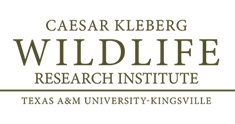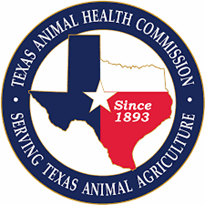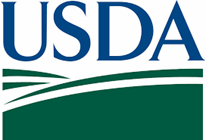Non-native animals often threaten the productivity of native rangelands. Nilgai, native to India, are one such large herbivore. First, nilgai compete for food with white-tailed deer and cattle. This becomes a major problem during periods of drought when food is scarce. Second, nilgai are alternative hosts of cattle fever ticks, which carry the deadly cattle disease – Texas Cattle Fever (A.K.A. bovine babesiosis), which is a significant threat to the U.S. cattle industry.
On the forage competition front, East Foundation and its research partners conduct extensive vegetation sampling across its four largest properties – the San Antonio Viejo, El Sauz, Santa Rosa, and Buena Vista ranches. Plant (both grass and forb) biomass and diversity are determined, from which annual estimates of grazing intensity and forage standing crop (available pant material) are known. Concurrent analysis of animal tissues (blood, hair, and dung) allow for the reconstruction of animal diets to determine diet overlap and assess competition. An unexpected outcome was the finding that during periods of drought nilgai diets are more like white-tailed deer than cattle.
Thus, nilgai are more likely to compete with deer for woody plants than with cattle for grass during dry times. Efforts to better understand these and other foraging interactions continue.
With regards to cattle fever ticks and nilgai, East Foundation has partnered with other organizations and government agencies to answer critical questions, mainly aimed at developing methods to treat ticks on nilgai. Some of these include:
- How far do nilgai move? How large of an area do nilgai use?
- What time of day are nilgai most active?
- Do nilgai attractants exist?
- How often do nilgai cross through holes in fences?
- Why do nilgai use latrines (large dung piles)?
- Can you determine the age of a nilgai from its teeth?
East Foundation is committed to using science and state-of-the art tools to provide solutions to problems threatening native rangelands.
For more information or questions about this project contact Andrea Montalvo at amontalvo@eastfoundation.net.
Related Publications
Relationships Between Plant Species Richness and Grazing Intensity in a Semiarid Ecosystem
Full Text November 2023Timothy E. Fulbright, J. Alfonso Ortega-Santos, Stacy L. Hines, Dillan J. Drabek, Ramon Saenz III, Tyler A. Campbell, David G. Hewitt, and David B. Wester
Consider the Source: The Impact of Social Mixing on Drylot Housed Steer Behavior and Productivity
Full Text October 2023Courtney L. Daigle, Jason E. Sawyer, Reinaldo F. Cooke, and Jenny S. Jennings
Stocking Density Influences Predominantly Blue Grama Pasture Mass and Animal Performance
Full Text October 2023Leonard M. Lauriault , Eric J. Scholljegerdes, and Jason E. Sawyer
Longitudinal Evaluation of Salmonella in Environmental Components and Peripheral Lymph Nodes of Fed Cattle
Full Text October 2023Ashley N. Arnold, Jason E. Sawyer, and Kerri B. Gehring
Effects of Helicopter Net Gunning on the Survival and Movement Behaviour of Nilgai Antelope
Full Text January 2023Jeremy A. Baumgardt, Aaron M. Foley, Kathryn M. Sliwa, Randy W. DeYoung, J. Alfonso Ortega-S., David G. Hewitt, Tyler A. Campbell, John A. Goolsby, and Kim H. Lohmeyer




